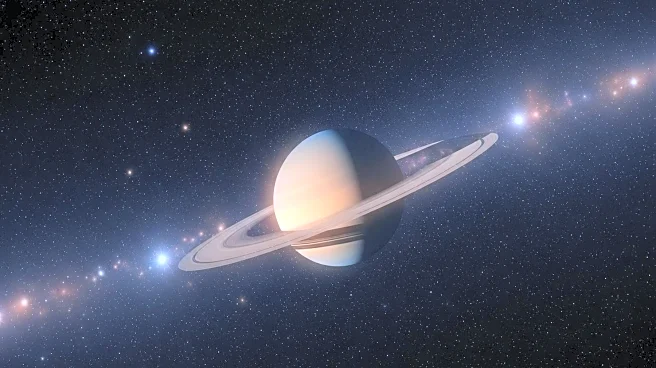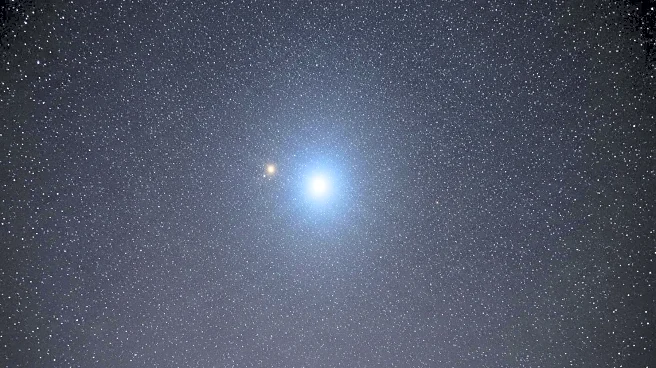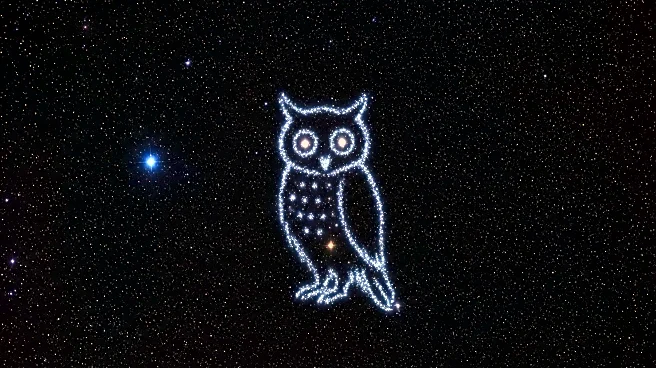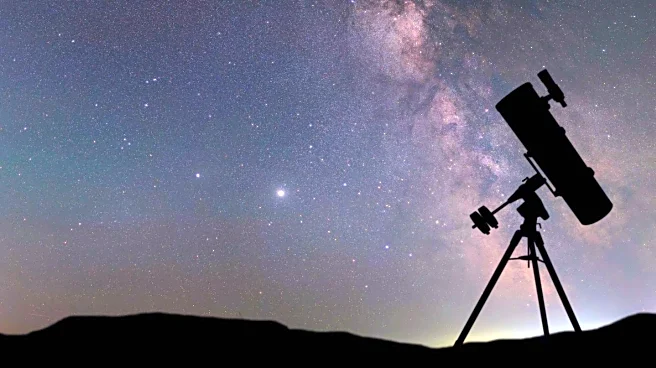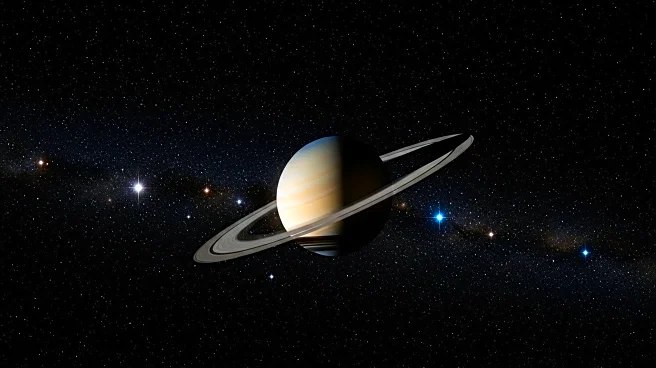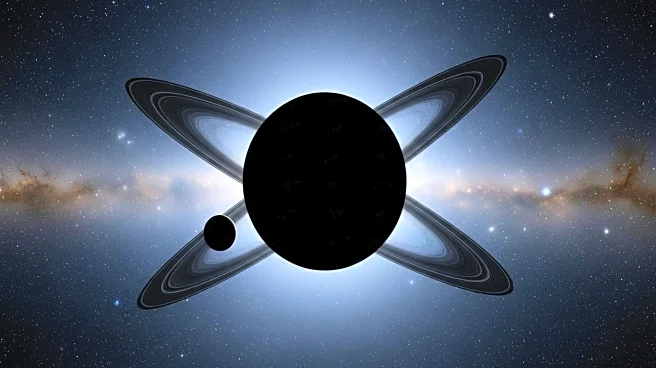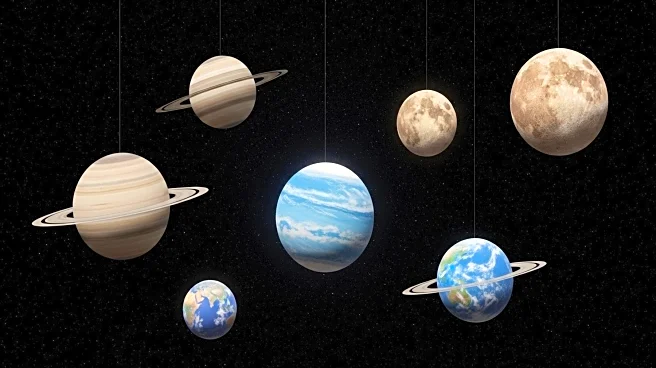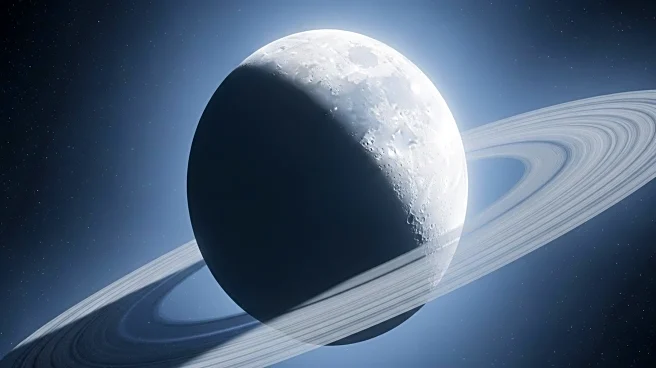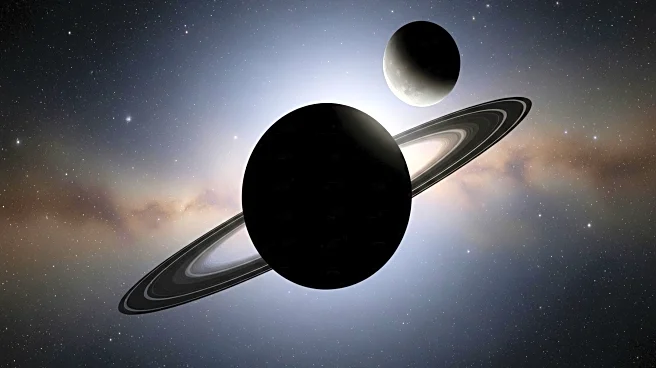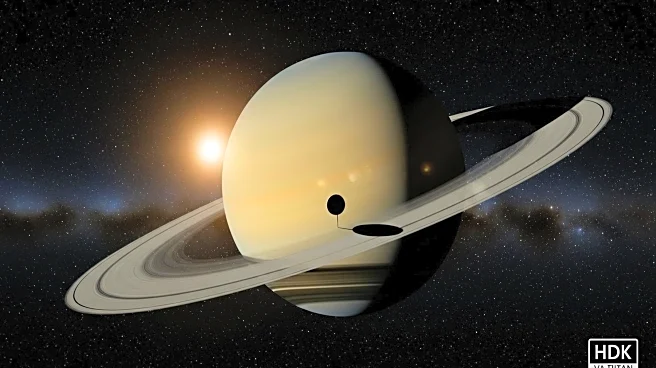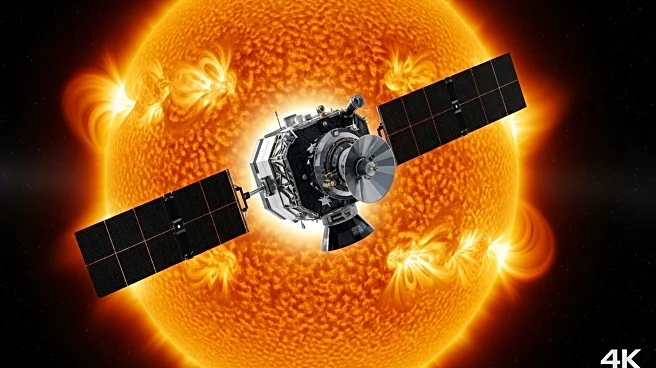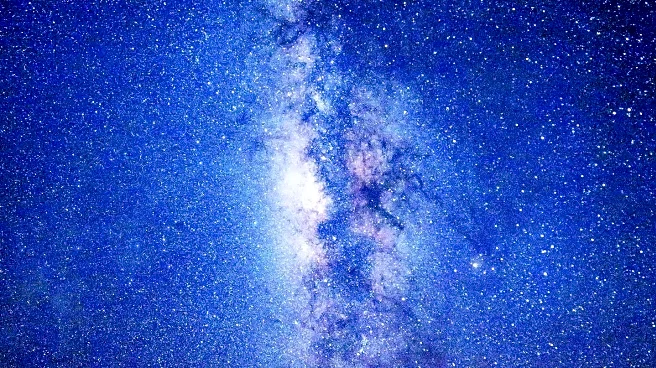What is the story about?
What's Happening?
Saturn is set to reach its annual opposition on September 21, aligning with Earth and the Sun in a straight trajectory. This celestial event will make Saturn appear brighter than at any other time of the year, as it is fully illuminated by sunlight. The planet will rise in the eastern sky around sunset and remain visible throughout the evening, with peak visibility occurring near midnight. The new phase of the Moon will provide minimal interference, creating ideal conditions for viewing Saturn without the need for telescopic equipment. Despite its apparent proximity, Saturn will still be over 740 million miles away from Earth. For those using telescopes, Saturn's iconic rings and its largest moon, Titan, may be visible.
Why It's Important?
This event is significant for both amateur and professional astronomers, as it provides a rare opportunity to observe Saturn's features with minimal interference from the Moon. The visibility of Saturn's rings and its numerous moons, including Titan, offers a chance to study the planet's complex system. Such celestial events can inspire public interest in astronomy and science, potentially encouraging educational pursuits in these fields. Additionally, the event highlights the dynamic nature of our solar system and the ongoing exploration of its celestial bodies.
What's Next?
Following its opposition, Saturn will remain visible for several weeks, although its visibility will gradually decrease each night due to the Sun's interference. Other planets, such as Neptune and Uranus, are also set to reach opposition later this year, providing further opportunities for astronomical observation. These events may prompt increased public engagement with astronomy and could lead to more educational programs and initiatives aimed at fostering interest in space exploration.
Beyond the Headlines
The visibility of Saturn and its rings during opposition can also serve as a reminder of the vastness and complexity of our solar system. It underscores the importance of continued space exploration and research, as understanding these distant worlds can provide insights into the formation and evolution of planetary systems. The event may also spark discussions about the potential for future missions to Saturn and its moons, which could yield valuable scientific data.
AI Generated Content
Do you find this article useful?
